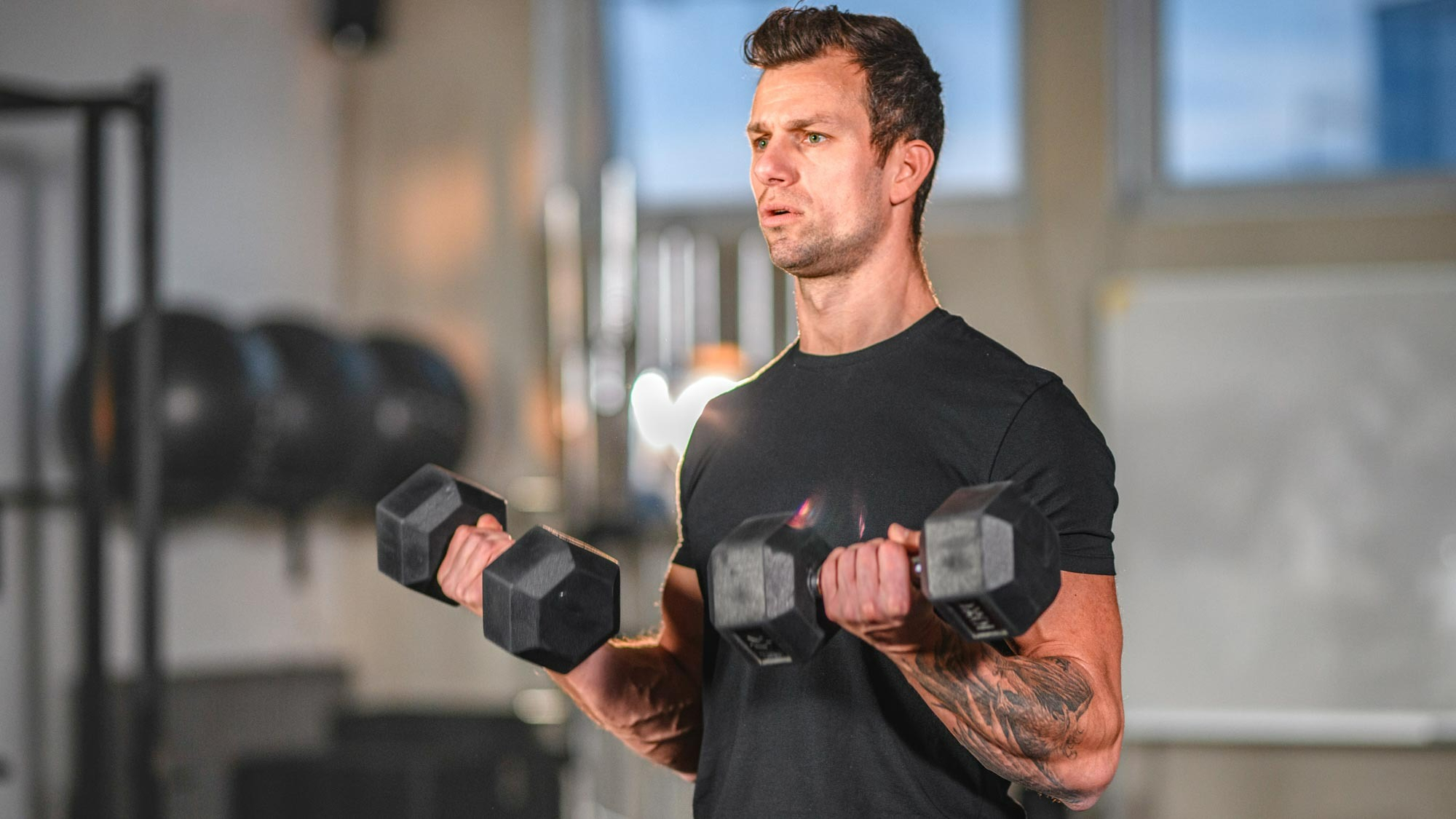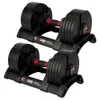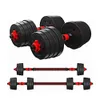No, not pull-ups — this 7-move dumbbell routine builds your entire upper body
Try this routine if you want to strengthen your upper body

You don't need to be a natural at pull-ups to build a strong, muscular and toned upper body. There are plenty of exercises out there that can help to develop strength up top, and working with some dumbbells is a very effective way to get started.
Any standard dumbbells will do, as long as you have access to the weight sizes you feel comfortable lifting with across a variety of upper body exercises. Or, you can't go wrong with a set of the best adjustable dumbbells which allow you to adjust the weight from a single pair of dumbbells.
Once you've got your weights ready to go, it's time to check out trainer James Stirling's upper body session. It uses a mixture of dumbbell moves and a couple of bodyweight exercises to challenge various muscles including the shoulders, back and arms.
Check out Stirling's demonstrations below as well as then find out more about the benefits of this routine.
Watch James Stirling's Upper Body Dumbbell Workout
A post shared by James Stirling - HOME WORKOUTS 💪🏻 (@london_fitness_guy)
A photo posted by on
Stirling says in his post, "I’m a huge believer in being efficient with your workouts at home", and his seven move routine for the upper body is no exception. The workout combines a superset, a triset circuit, and a finisher for an extra strength building boost.
You start with a superset, alternating between chest presses and bent-over rows for 12-15 reps each, resting one minute between sets for three to four rounds. Then, you move on to shoulder presses, performing three to four sets of 12-15 reps and resting 60-90 seconds between sets.
Next, it's time to tackle the circuit in the form of a triset that includes tricep dips, renegade rows, and bicep curls. For each move you will repeat for 12-15 reps (renegade rows for 8) and rest for one minute between rounds for three to four sets.
The grand finale consists of performing push-ups to failure, aiming for 3 sets and resting 90 seconds between attempts to build endurance.
Sign up to get the BEST of Tom's Guide direct to your inbox.
Get instant access to breaking news, the hottest reviews, great deals and helpful tips.
It might sound like a lot but if you pick a sensible weight that you are confident handling yet also challenged and you work on executing each move with correct form, you will make it to the end and likely feel better for doing it.
Naturally, strength building can lead to a case of delayed onset muscle soreness (DOMS), which is the muscle soreness and stiffness you can feel after exercise and is caused by tiny muscle tears during your workout. This is often a good sign, indicating that your muscles are adapting and growing stronger.
However, if the DOMS don't fade away after some time you should seek guidance from a physiotherapist in case an injury has occurred.
Otherwise, you can support your muscle recovery, through light movement such as walking, staying hydrated and eating plenty of good protein. We also have some mobility work routines listed below which are also good for active recovery.
More from Tom's Guide
- This equipment free 5-move routine strengthens your back and improves mobility — here's why I love it
- Strength and conditioning coach shares 4 exercises to strengthen your upper body and boost mobility with a resistance band
- I tried this 15-minute Pilates ab workout instead of going to a class — here’s what happened

Jessica has been a fitness writer at Tom’s Guide since 2023, bringing three years of experience writing about health, fitness, and the great outdoors. Her passion for exercise began during her childhood, where she spent weekends hiking and competing in local athletics club events. After earning a master’s degree in journalism from Cardiff University, Jessica found the perfect way to combine her love of storytelling and fitness into a career.
Jessica is passionate about testing fitness gear and tech, using her reviews to help readers make informed buying decisions. She ran her first marathon in April 2024, finishing it in 3 hours and 48 minutes. Through her training, she’s developed a deep understanding of what it takes to grow as a runner, from effective workouts and recovery techniques to selecting the right gear for every challenge.
When she’s not at her desk, Jessica enjoys spending time in the kitchen crafting new recipes, braving cold water swims and hiking.



